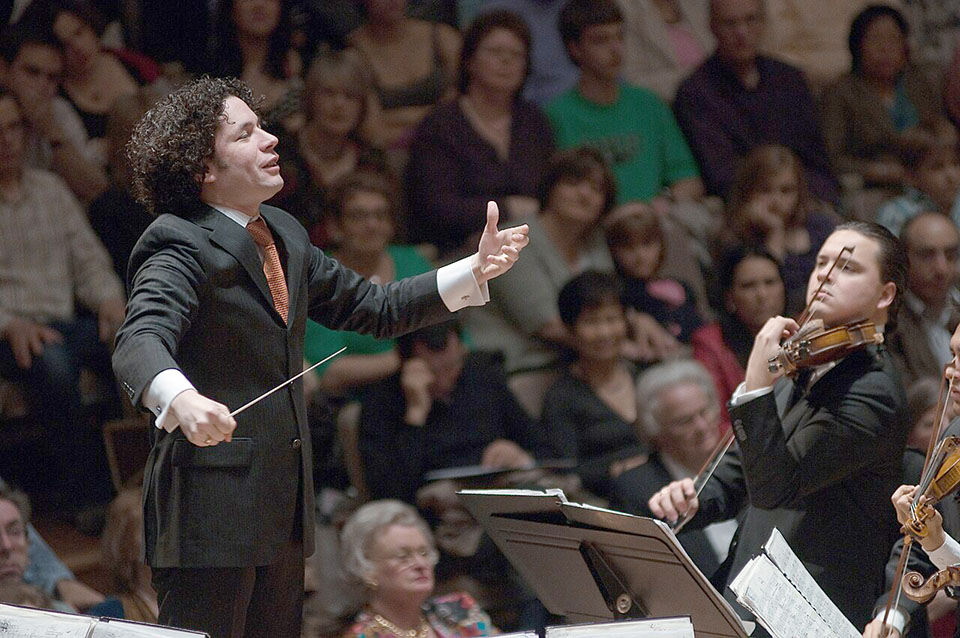
From time to time, people ask me with a genuine sense of curiosity, “What does an orchestra conductor actually do?” The last two words are invariably emphasized implying that the questioner suspects that a conductor does nothing much at all. Nevertheless, it’s a good question, because the role of the orchestral conductor is not widely understood outside the classical music world. It might look as though the conductor is doing very little work at a concert but this is because most of the work has already been done. Conductor and orchestra sometimes rehearse for many days in preparation for a major concert performance.
The tasks of the conductor are highly complex and several excellent and informative books have been written on the subject. Professional orchestral conductors are a minority among musicians. This is because the job is incredibly demanding and requires an entire tool-box of musical and inter-personal skills that few other people possess. Successful professional conductors invariably have an advanced knowledge of conducting techniques, a perfect sense of tempo and rhythm and absolute pitch. They require and extensive knowledge of the orchestral repertoire, an understanding of composing, orchestration and a basic understanding of every instrument in the orchestra.
Conductors have many more musical tasks than merely beating time. Instructions in the score are usually in Italian and often vague. Expressions such as “a bit slower” or “gradually getting faster” are common. Printed music doesn’t tell you exactly how loudly or how quietly a piece should be played, how short a staccato note should be, or how a musical phrase should be “shaped”. As a result, one of the most challenging tasks in performing music is not playing the right notes in the right place, but deciding how to play them. It’s the conductor’s task to make these all-important musical decisions. It takes certain personal qualities to convince the members of a sixty-piece orchestra to “play it my way”. Some conductors manage this with ease, tact and consummate charm. Others are less successful and several well-known conductors are infamous for being heartily detested.
The conductor is expected to know every detail of the score intimately and some conductors such as Gustavo Dudamel can commit entire works to memory. There’s well known saying in the profession that the conductor should “have the score in his head, not his head in the score.” By the time the concert begins, rehearsal work will have been completed but the conductor still needs to give cues to the players; control tempo and dynamics and ensure that the orchestral balance is correct. Some conductors have the gift of pulling that little bit extra out of an orchestra at the concert. Here are two documentary films (both in German with English subtitles) which show two contrasting approaches. Interestingly, neither of the conductors is speaking their first language.
Ludwig van Beethoven (1770-1827): Symphony No. 3 in E flat, Op 55 “Eroica”. Bavarian Radio Symphony Orchestra cond. Mariss Jansons (Duration: 43:18; Video: 720p HD)
Born in Riga, Latvia, Jansons moved to Leningrad in 1956, where he studied conducting receiving further training in Austria. He became one of the world’s leading conductors and served as principal conductor with the world’s finest orchestras. For sixteen years he had a close association with the Bavarian Radio Symphony Orchestra and his attention to the smallest musical detail is apparent.
The Eroica symphony marked the beginning of the composer’s so-called innovative “middle period”. Completed in 1804, the work broke boundaries in symphonic form, length, harmony, emotional and cultural content. Beethoven had the highest esteem for Napoleon Bonaparte and dedicated the work to him. After the symphony was completed, Beethoven was told that Bonaparte had declared himself Emperor. The composer’s secretary left a graphic description of Beethoven’s reaction. The composer broke into a rage and exclaimed, “So he is no more than a common mortal! Now…he will tread under foot all the rights of Man, indulge only his ambition…think himself superior to all men and become a tyrant!” Beethoven seized the top of the title-page with the dedication, tore it in half and threw it on the floor. The page had to be recopied, and it was then that the work was renamed Sinfonia Eroica.
Sergei Prokofiev (1891-1953): Symphony No. 1 in D major Op. 25 “Classical” Munich Philharmonic Orchestra cond. Sergiu Celibidache (Duration: 39.15; Video: 480p)
This was completed in 1917 and was intended as a modern re-working of the classical style of Haydn and Mozart, hence the symphony’s nickname. Calvin Dotsey writes. “The composer decided that the work would be concise and playful, updating traditional classical forms with modern harmonies, rhythms and orchestral colours. Throughout, Prokofiev wittily juxtaposes his own daring musical language with typical melodic turns and gestures from Mozart’s time”.
The world-renowned Romanian conductor Sergiu Celibidache was much influenced by Zen Buddhism and during each concert, he focused on the optimal conditions for what he called a “transcendent experience”. Celibidache was well-known for his demands for extensive rehearsal time, and in this fascinating film you can see how he used it. He rehearses without a score (a feat in itself) but obviously knows every detail and demands absolute precision from the players. Celibidache has an incredible grasp of the music; he can hear every detail and manages to mix serious instructions and good humour with consummate ease.






